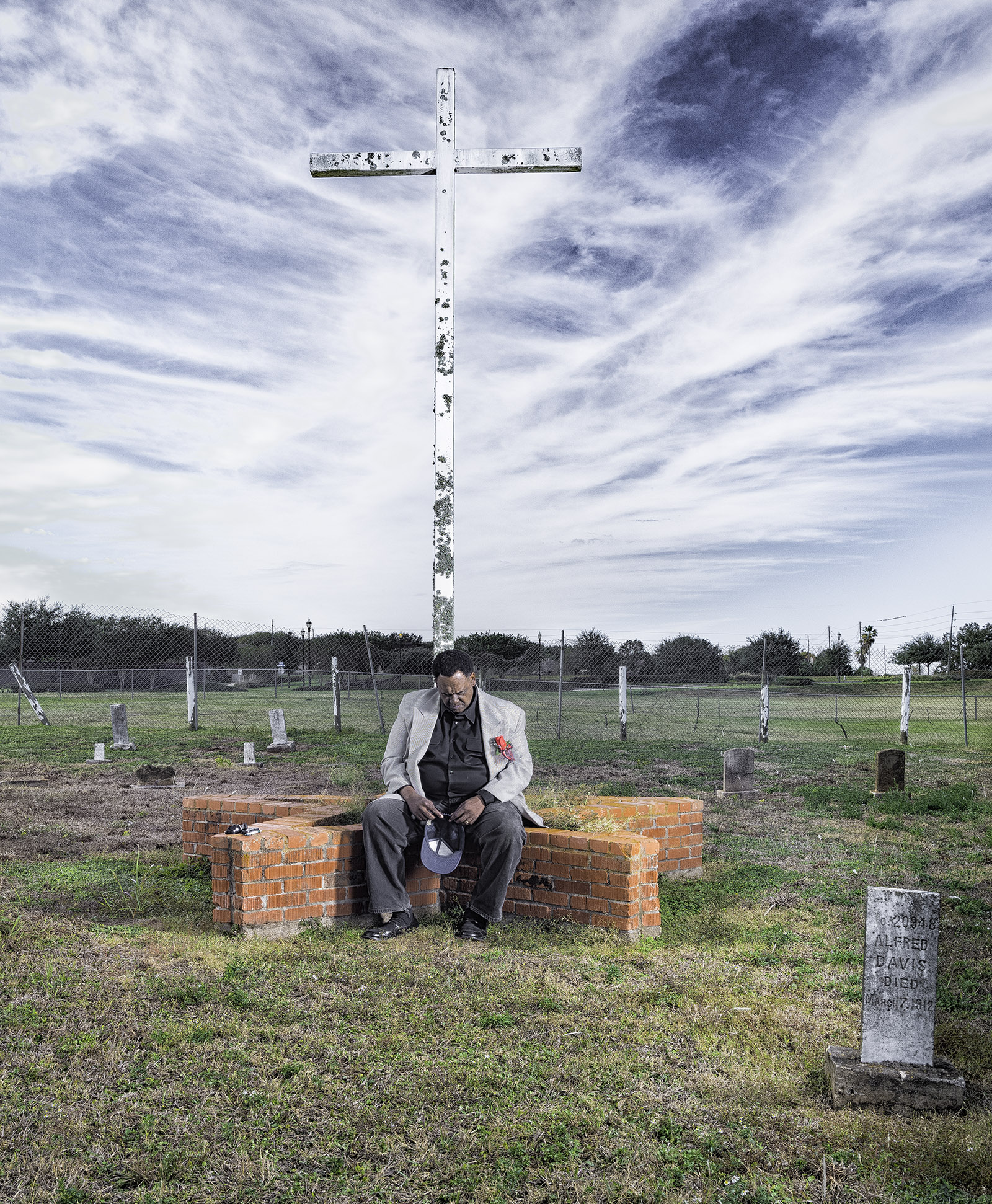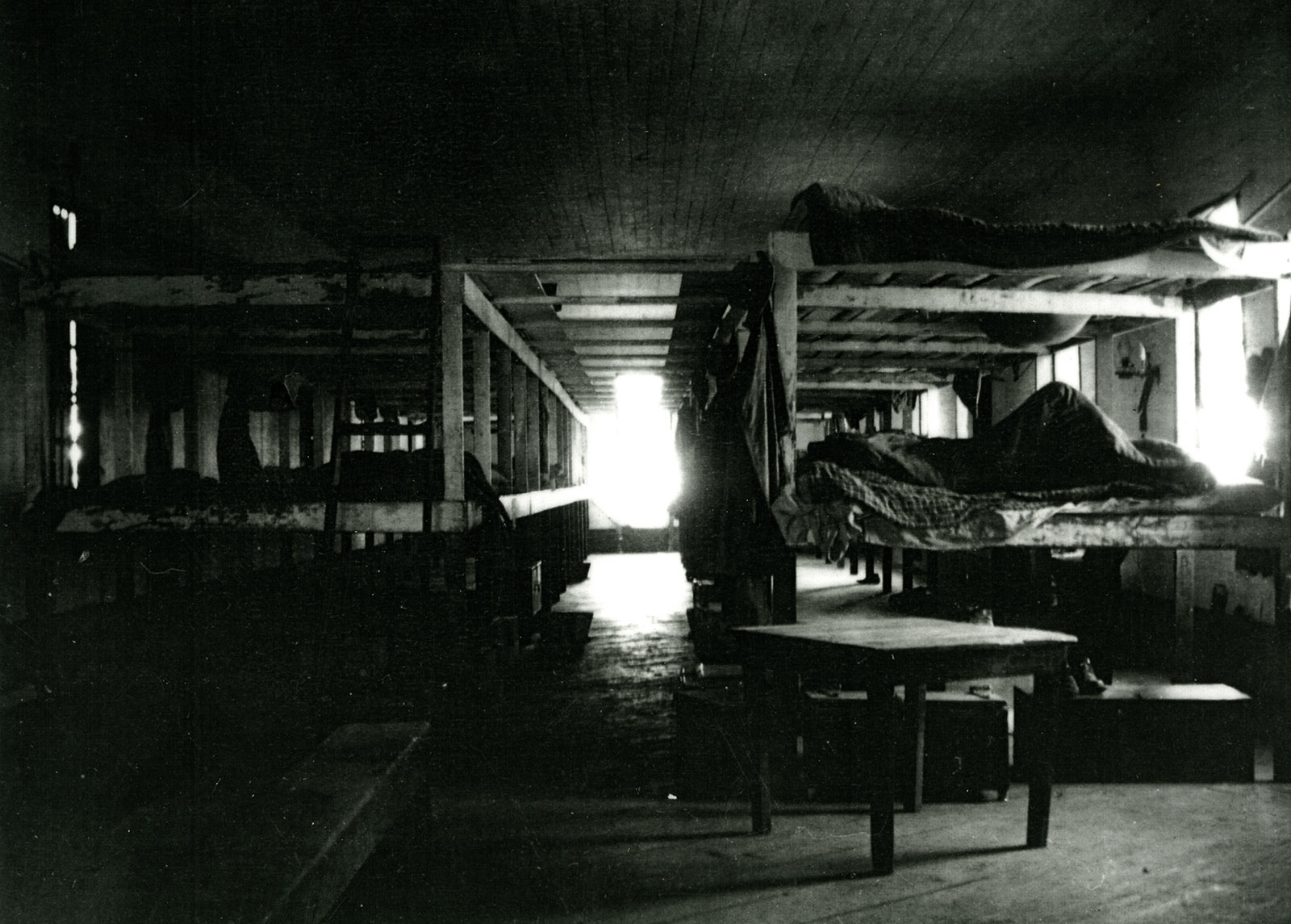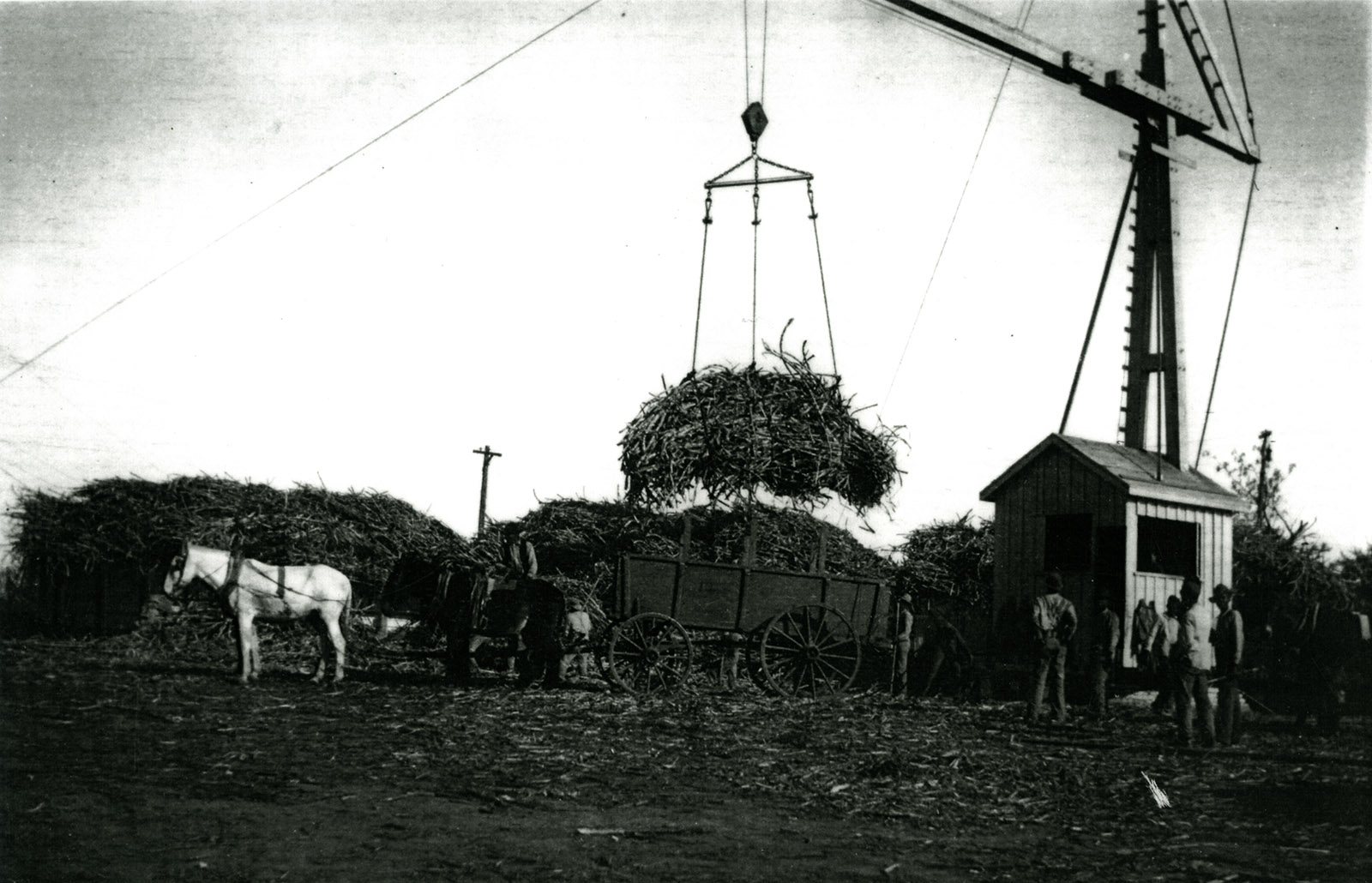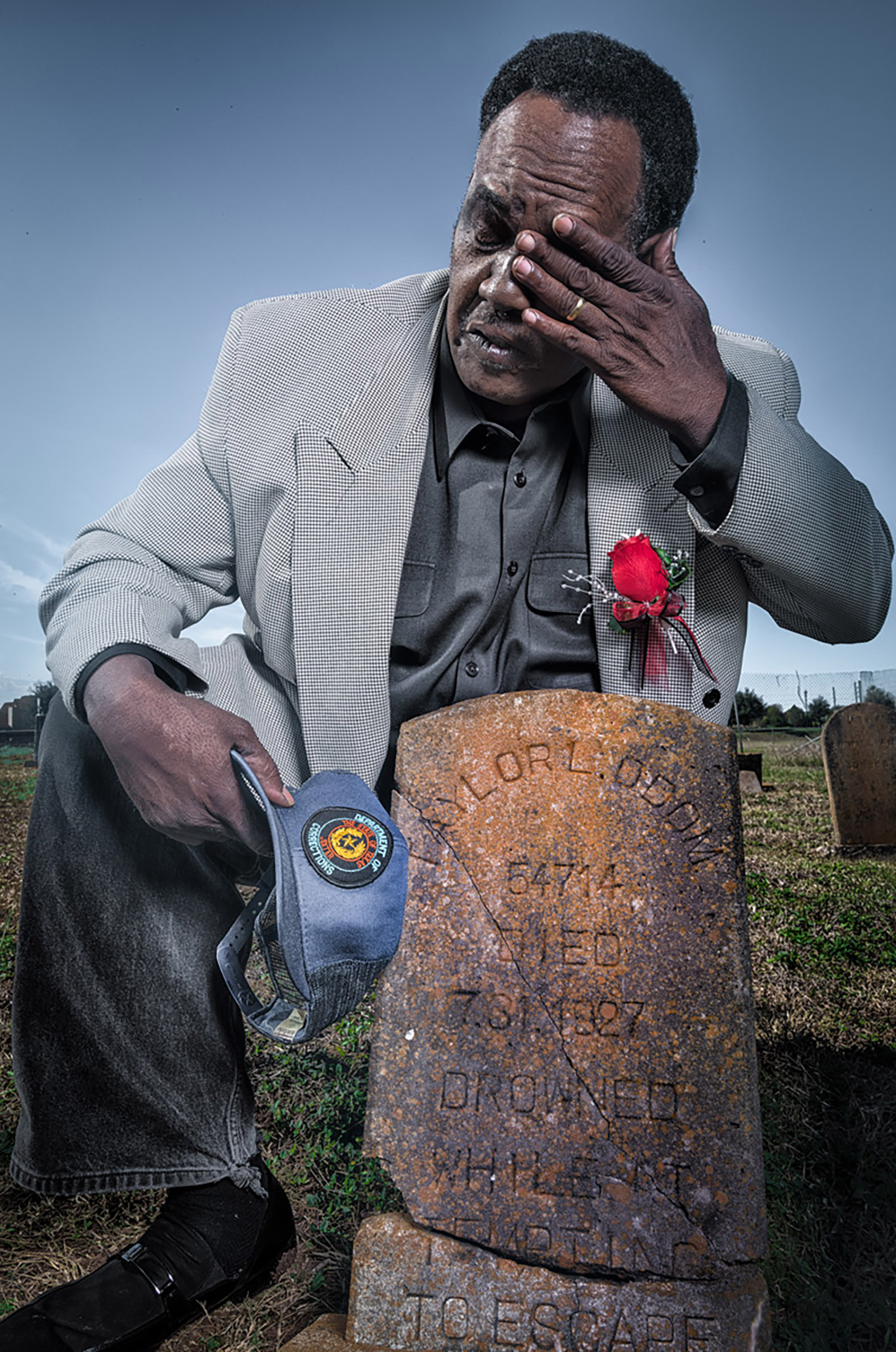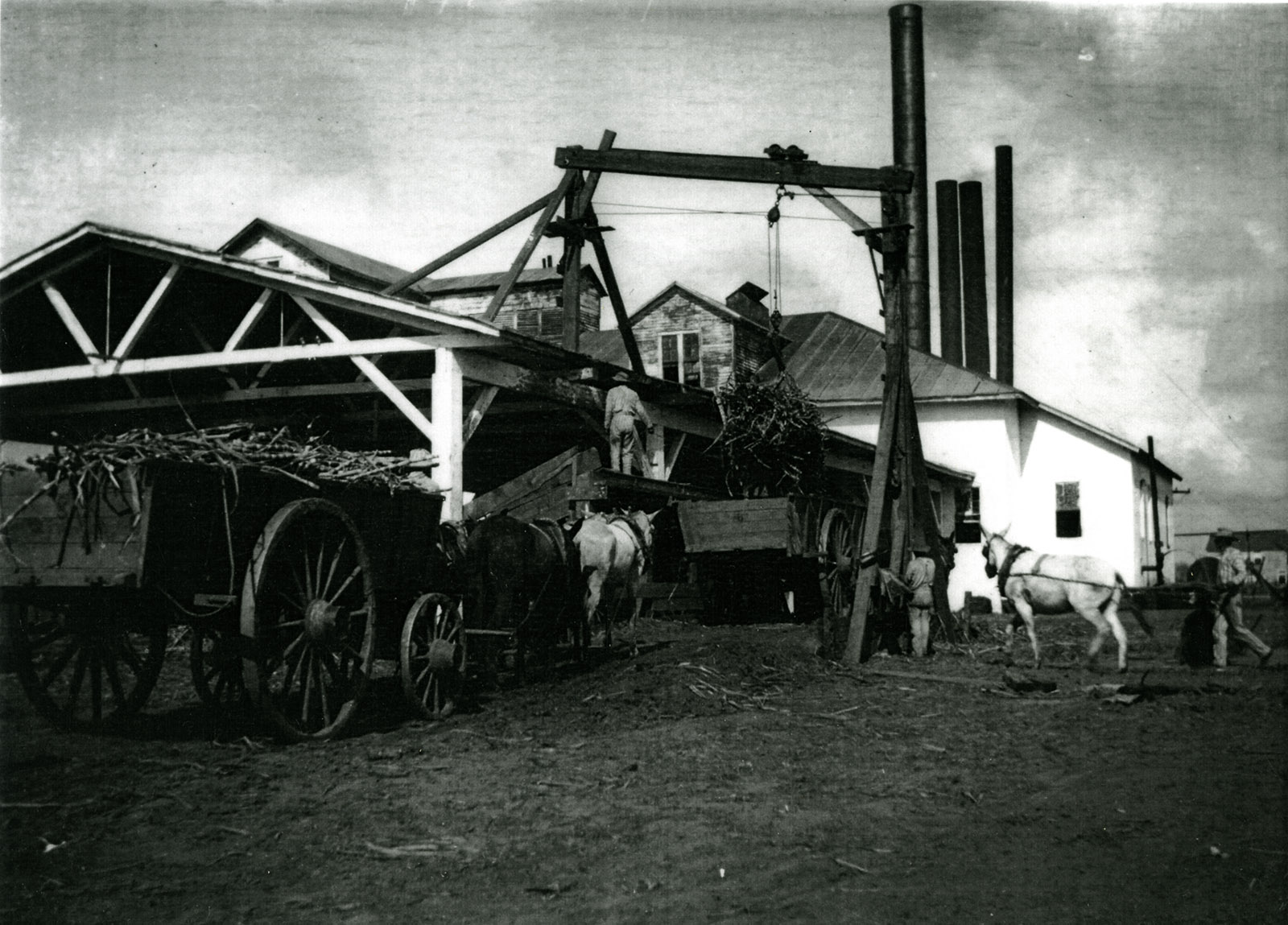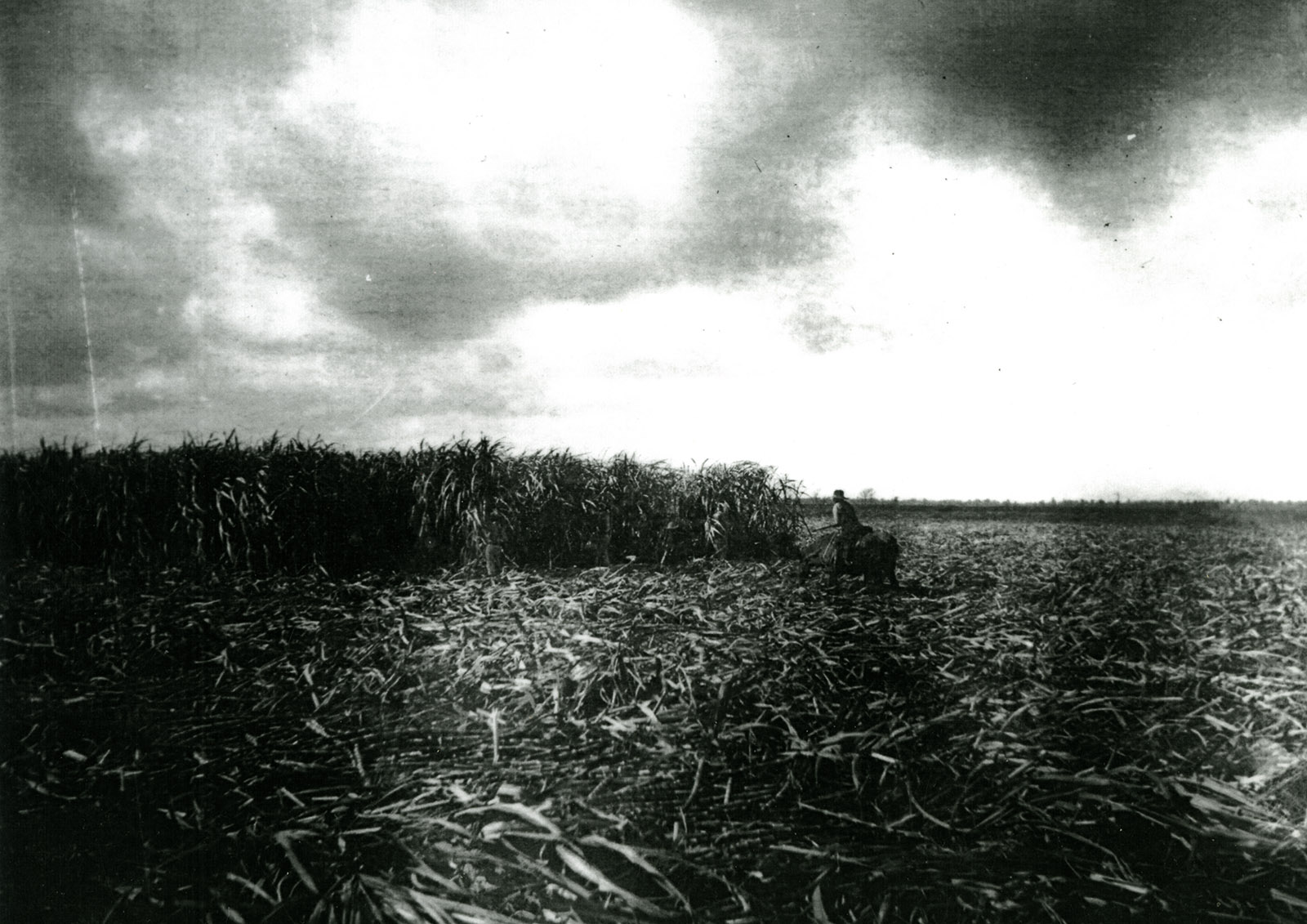On a crisp morning in March, I sat with fifty-nine-year-old Reginald Moore in his black pickup truck, parked just behind an HEB grocery store in Sugar Land, Texas. Moore, a burly former high-school football player, longshoreman, and prison guard, was reintroducing me to the prosperous suburb of Houston where I grew up. Less than half a mile away from us, at the corner of Texas State Highway 6 and US Route 90 Alternate, sat a large blue shipping container. Alongside several others, an orange crane, and a pair of portable toilets, its presence on the edge of a bustling construction site was unremarkable.
“See where that blue container is, right there?” he said. “That’s where those bodies are right now.”
Early last year, construction crews breaking ground on a $59 million development for a vocational high school in the Fort Bend Independent School District discovered the bones of ninety-five individuals, ranging in age from fourteen to seventy years old, all but one of them male. Forensic surveys revealed that they had died between 1878 and 1911, and were buried in unmarked graves. With the help of an environmental consulting firm, the district determined that they had likely been prisoners of the state penal system, leased out to the sugar-cane barons who then dominated the region under the brutal system known as convict leasing.
Moore wanted to show me the spot where the remains were found, and pulled into the construction site cautiously. “Sometimes they let me in here, sometimes they may not,” he said, the truck’s engine roaring over the cacophony of buzzing saws and beeping earth movers. He pointed past a few muddy puddles and some black piping to a group of dirt mounds. “That’s where those guys were at,” he said.
In the 1980s, after a recession claimed his job at the Houston Ship Channel, Moore, who is black, worked as a prison guard at the Jester State Prison Farm, several miles to the northwest of the construction site. There were no black captains or majors in the Texas correctional system, despite a 1980 district court ruling that had led to an influx of minority guards, he said. At the same time, he added, the black population in the Texas prison system was boosted by racist disparities in sentencing for crack and cocaine convictions. The state’s increased use of prison terms for drug offenses meant that between 1986 and 1999, according to a report by the Justice Policy Institute, African Americans accounted for 81 percent of the growth in drug charge-related prison admissions.
Black guards had no one in the upper ranks to advocate for their promotion, Moore recalled. “We didn’t have no guys that was in high authority that could say anything that would get you in a better position,” Moore recalled. “Because if you said anything, they would retaliate against you.” The image of the black inmates working under a white overseer on the prison farms would haunt Moore long after he returned to the ship channel in 1988. He couldn’t let go of it.
After he retired in 2003, Moore immersed himself in the past. He pored over records of land grants to Stephen F. Austin, the “Father of Texas,” who in 1824 brought 300 families from the United States to settle what would become Sugar Land. A number of these settlers owed their fortunes to convict leasing, a system whose abuses Douglas Blackmon documented in his Pulitzer Prize-winning book, Slavery by Another Name (2008). As Blackmon wrote, although the Thirteenth Amendment to the US Constitution, ratified in 1865, ended slavery and involuntary servitude for blacks, it included an exception for those convicted of a crime. The Texas legislature, like the rest of the postbellum South, exploited this loophole, passing laws subjecting African Americans to criminal prosecutions for offenses ranging from vagrancy to possession of weapons to failure to carry proof of employment. Southern businessmen leased these prisoners from the state to work mines, construct railroads, and toil on plantations.
“The Texas sugar plantations were profitable because they depended on slave labor,” The New York Times’s columnist Brent Staples wrote last fall. “Abolition crushed the industry, but the convict leasing system resurrected it in a form that can legitimately be seen as more pernicious than slavery: slave masters had at least a nominal interest in keeping alive people whom they owned and in whom they held an economic stake.”
*
Sugar Land would earn its name, as Moore came to know, after two Confederate veterans, Edward H. Cunningham and Littleberry A. Ellis, signed a five-year contract with Texas in 1878 to lease its entire prison population to work their sugar-cane fields. By 1882, some 800 prisoners—over a third of the state’s inmates—worked on twelve of the eighteen plantations in Texas through Cunningham and Ellis’s contracts. At the height of their operation, according to Robert Perkinson’s Texas Tough (2010), they had the largest lease system in the US, with some 2,300 convicts laboring—most of them former slaves.
Advertisement
From the state’s perspective, the use of prisoners for “outside labor” on plantations was a “necessity,” both as a revenue producer and as a solution to the problem of overcrowding within prisons, according to a Texas State Penitentiary report published in 1880. Texas required lessees to house, clothe, feed, and manage inmates. Black prisoners were typically sent to work in swamps infested with mosquitos. Convict-labor camps were known for their decrepit housing, rampant sickness, and cruel guards; punishments included locking prisoners in stocks and whippings. An estimated 3,500 convict-leased prisoners in Texas died between 1866 and 1912.
By Perkinson’s account, Ellis and Cunningham earned as much as $500 per year on every convict’s labor, making at least $500,000 “clear profit” over the term of the lease—a vast fortune in the dollar values of the day. How did it work out for the state? “While most governments expect their penal systems to incur significant expenses,” wrote Perkinson, “Texas’s, for much of the nineteenth century, provided steady revenue, more than $300,000 a year by the early 1880s.” Following the expiration of the Cunningham and Ellis contract, Texas continued leasing prisoners to private interests. Jermaine Thibodeaux, a doctoral candidate in history at the University of Texas, told me that from 1884 to 1910, the state sent at least 1,000 prisoners to work on farms, most of which also grew sugar cane, the most valuable crop of the day. The state charged $17 a month per worker in the early 1890s; by 1908, the figure had risen to $31 per month, Thibodeaux said. “The contract-farm arrangement was a boon to local sugar farmers and the state. Both parties got [what] they needed.”
In 1907, new owners of what would become the Imperial Sugar Company acquired what had been a Cunningham and Ellis plantation and mill; the following year, the state bought the plantation, rebranding it as the Imperial State Prison Farm. In 1910, following a series of newspaper exposés, the Texas legislature formally outlawed convict leasing. After the practice was ended, the state of Texas purchased a number of plantations on which convict leasing had taken place, converting them into state-owned “prison farms,” Caleb McDaniel, an expert in nineteenth-century American history at Rice University, told me.
Moore would come to know this history intimately. Armed with an ever-accumulating wealth of information about the grim legacy of the sugar industry’s labor practices, he attended countless Sugar Land city bond hearings and petitioned the Texas Historical Commission in hopes of persuading an official body to excavate areas slated for commercial or residential development. With dizzying recall, he reeled off for me lists of old prison buildings, historical preservation regulations, the names of officials he’d alerted, long-hidden facts and figures, obscure names and dates. Fort Bend Independent School District, he said, should have known what it would find when it purchased the land in 2011 for its development. “If y’all are going to [buy and] sell this land,” Moore said, “they”—the victims of the convict-leasing era—“need some type of restitution, reparation, for what they put into it.”
Moore talked “to anyone who [would] listen to him for the last twenty years at the state level, at the county level, at the city level, at any level possible,” Veronica Sopher, a spokesperson for the Fort Bend School District, told me. His efforts finally prevailed: based on concerns raised by Moore about what might be found, the school district hired an environmental consulting firm to monitor construction at the school site. Nevertheless, Sopher called it a “fluke” that human remains were found because it was so close to the boundary of the property—an effort, perhaps, to give the school district the benefit of the doubt. But it seemed dismissive of those like Moore who had long urged officials to act with more discretion.
*
Following the discovery of the “Sugar Land 95,” as the remains became known, Sugar Land officials assembled a task force to offer recommendations to the city on DNA analysis of the remains, burial location, and reinterment. The city’s initial preference was to move them to the Old Imperial Farm Cemetery, a city-run resting ground it oversees that’s roughly a mile away and contains the remains of prisoners and guards who died in the early 1900s at the Central Unit (as the Imperial State Farm prison was later renamed); Moore serves as caretaker of the cemetery.
Advertisement
The task force, whose members included Moore, McDaniel, and Sopher, wanted the city and school district to reinter them on the Reese site and construct a memorial. “To properly honor [the dead] would be to put them back where you took them out of,” Sam Collins, an adviser to the National Trust for Historic Preservation and member of the task force, told me. But the school district resisted, pointing out that state law prevented it from operating a cemetery.
The task force persisted in its view, however, and in October voted nineteen to one to recommend interring the remains at the Reese site. (Sopher’s was the lone objecting vote.) The district ignored the group, voting instead to stick with the Old Imperial Farm Cemetery. But when the district sought court approval—as it was required to do under state law—the judge denied the request, instead ordering the school board to consult further with members of the community. The school district has complained of rising costs, claiming that having to redesign the entire Reese center could push the project $25 million over budget. (It’s unclear how much the school district has spent so far in litigation.)
When I read of the judge’s stay last fall, it seemed only a temporary setback. In Sugar Land, the political will to obfuscate history seemed too strong. In January 2017, Allen Bogard, the city manager, told Texas Monthly that there was “not a single facility, road, nor improvement that exists today in the city of Sugar Land that can be traced back to either the convict-lease program or slavery.” Yet the city’s reluctance to acknowledge its past was selective: in September, the Sugar Land Heritage Foundation released the design for its annual Christmas ornament—a replica of a house built in the 1870s by the plantation owner Littleberry Ellis.
By the time I was growing up in Sugar Land, in the 1990s, the town had become a haven for high-skilled immigrants, thanks in part to the landmark immigration reforms of 1965. Drawn to the Houston area’s booming energy industry, top-tier public schools, and pristine subdivisions with names like Settlers Park and Sugar Mill, my parents and their peers arrived in the 1970s and 1980s to this aspirational dream town. There was little clue at that time in Sugar Land of the dark, subterranean past on which, quite literally, our homes and schools were built.
Much of what I would come to know of the local history came by way of a state history curriculum that valorized figures like Stephen F. Austin, while underplaying his dogged advocacy for slavery and role in violent displacement of the indigenous Karankawa people, who once populated much of Texas’s Gulf coast. Weekend campouts with the Boy Scouts took me to the bogs, creeks, and mosquito-filled wetlands they once called home. Kitschy festivals and celebrations marking the area’s colonial history, while perhaps well-intended, now seem shocking in their erasures and evasions.
Today, like much of the Houston metro area, it is among the most diverse, economically flourishing cities in America. Life in Sugar Land is sweet, particularly for the immigrants who flock to it in search of a fresh start and prosperity. With its shopping malls smelling of Cinnabon, twenty-four-screen multiplexes, boisterous town squares, circuitous parks and playgrounds nestled among the bayous and creeks, it is as if the city wants to unburden its new residents of any responsibility for its past. For today’s city elders, a selective amnesia about Sugar Land’s history is convenient for a place that prides itself on offering a bright future.
But not for K.P. George. In November, George, a member of the school board, became county judge, Fort Bend’s top elected position, and the first Indian-American to occupy the post. After his victory, he recalled being asked how he might feel if one of the recovered bodies had been a relative of his. With his new authority, he brought the county into the negotiations over the remains. But the school district just wanted to get rid of them, George said.
On February 4, George, Congressman Al Green, and other officials sent a letter to the school trustees asking them to stop construction on the Reese site and to leave the bodies there. The signees attended a school board meeting in late February. “We told them… you need to do the fair thing for these human beings,” George told me.
Luck appears to be on the side of Moore and his allies. The school district and the county are negotiating a deal that would allow the county to build and maintain a memorial park and cemetery on the site where the bodies were found. Such an agreement would seem stymied by a Texas law that prevents a county of Fort Bend’s size from operating a cemetery, but in late May, the state legislature passed a bill that would allow for Fort Bend County to operate a cemetery. Currently awaiting Governor Greg Abbott’s signature, the new law would finally allow the county to begin the process of reinterring the bodies at the school site and constructing a memorial.
*
On my day out with Moore, we drove past the now-defunct Imperial Sugar complex that had absorbed the Cunningham and Ellis plantation. Moore showed me one of the factory’s old buildings used for refining, for which he helped obtain a historical preservation order. In 2012, Imperial Sugar was acquired by the Louis Dreyfus food-and-agriculture conglomerate. The company’s official history makes no mention of convict leasing.
The old factory sits at the base of a tiny peninsula, abutted on its northern rim by one of the countless bends in Oyster Creek, which winds its way through much of Sugar Land. Moore drove us up and down, back and forth, across the creek. White prison guards once lived along one side of the creek, across from the slave quarters of old, Moore told me. Today, this land is a mix of older, wooden houses and new refurbished ones. He pointed out a special education center that once was a segregated school for black children. Later, we passed the prison units where he had worked.
Despite the strides he has made toward preserving the Reese site, Moore knows that the expunging of the past continues. Developers looking to build in Sienna Plantation, a nearby master-planned community, told him they had found evidence of prisoner remains but simply “pushed all through that.” Localities eager for development often circumvent preservation laws by entering into agreements with private entities that do not have to follow such laws, he explained.
Jay Jenkins, an attorney with the Texas Criminal Justice Coalition who has worked with Moore and also served on the task force, told me that Moore’s had been a voice in the wilderness for years. “They didn’t regard him as serious,” he said, “and the discovery of the bodies changed that dramatically.” To McDaniel, Moore is an exemplary figure. In his experience, much of the foundational work in African-American scholarship is indebted to people like Moore, calling attention to histories neglected by the academy.
In Texas today, prison labor is still a multimillion-dollar industry, and roughly a third of prisoners in the state are black. It remains one of five states where regular prison jobs are unpaid. Convict leasing, Jenkins told me, is the crucial link between the history of slavery and the present system of mass incarceration: “All the capitalist concerns, all the cruelty, of that stuff was baked into our carceral system during this period of convict leasing.” Building over the bodies denies that reality.
Moore seemed to waver between a sense of long-delayed gratification and lingering anger. “Now when you want to tell the truth,” he said, “it’s bad for business.”
With thanks to Amanda Focke, Assistant Head of the Fondren Library’s Woodson Research Center at Rice University, for information and research on archival photos from Reginald Moore’s collection.

